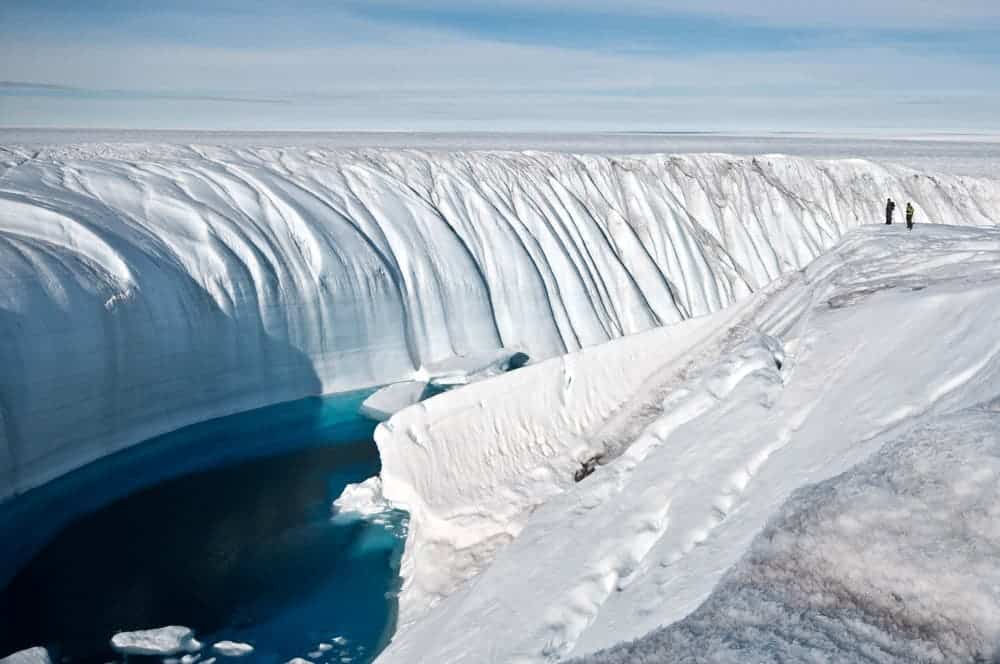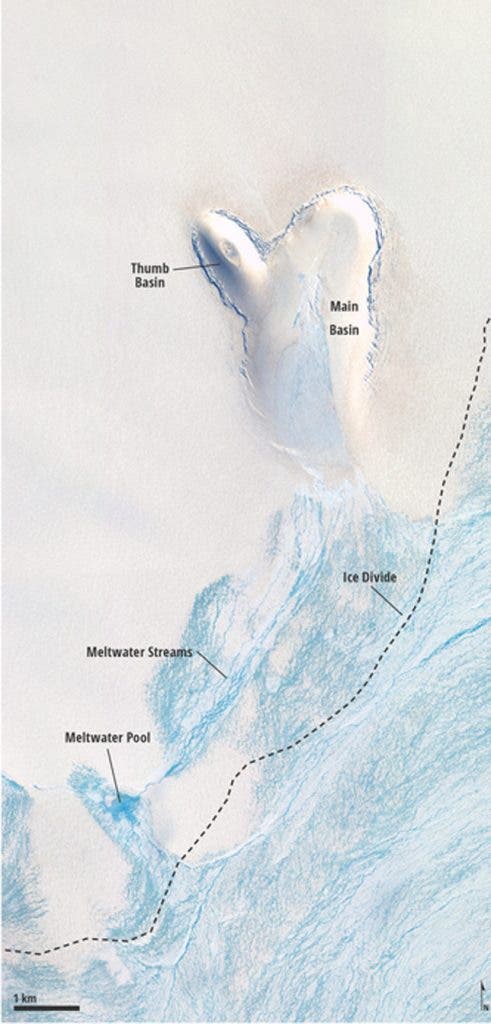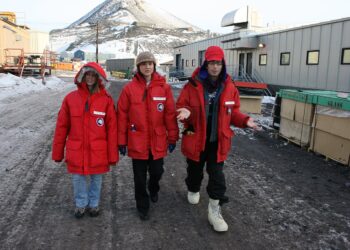Using satellite imagery, scientists have discovered two new subglacial lakes under Greenland’s ice sheet bringing the total number to four. The discovery is not well met, however. These lakes are already drained, signaling that climate change is making its way beneath the Greenland ice sheet. The discovery suggests subglacial lakes could increase the sensitivity of ice to climatic change, further accelerating ice melt.
Lakes beneath the thick Greenland ice

Scientists were intrigued by an unusual summer melting season in 2011. Then, billions of gallons of water had flushed some 30 miles (50 kilometers) to the sea, leaving behind sunken craters in the surface of the ice above the lakes. Michael Bevis, of the School of Earth Sciences at Ohio State University in Columbus, and colleagues used satellite imagery to inspect the anomaly and found a lake corresponded for each of the two huge craters, nested beneath the huge Greenland ice sheet.
[ALSO SEE] Frozen underworld discovered under Greenland ice sheet
Greenland’s ice sheet is the second largest ice sheet in the world after Antarctica and it covers almost 80 percent of the island. The island has 2.8 million cubic kilometers volume of ice and at some spots the ice is about 3 kilometers thick.
The first lake had been there for around 40 years, and was filled with 6.7 billions of gallons of water or enough to fill 10,000 Olympic swimming pools. However, based on more recent satellite images, the lake seems to have dried up, around 4 years ago, in 2011. The crater left, stretches on a distance of 1.2 miles all around and across, and has a depth of 70 metres, the height of a ten story building.
The second lake in northeastern Greenland has filled and drained twice since its first blowout in 2011. Since it’s 230 feet (70 meters) deep, this tells us quite a bit about the state of warming and water melting in the region. The water itself is meltwater from the ice sheet’s surface, trickling downward through cracks in the ice. But this repeated depletion and refilling of the lake can only mean that there’s of excess heat affecting the ice sheet.
“This is a new mechanism for getting heat from the top of the ice cap to the bottom of the ice cap, and I think it’s likely that we’ll see it happening at other places in the future,” said Michael Willis, lead author of the Nature study and a glaciologist at Cornell University and the University of North Carolina at Chapel Hill.
“If enough water is pouring down into the Greenland Ice Sheet for us to see the same subglacial lake empty and refill itself over and over, then there must be so much latent heat being released under the ice that we’d have to expect it to change the large-scale behavior of the ice sheet,” said Michael Bevis, a geophysicist at Ohio State University and co-author of the Nature study.

The two lakes are quite important because they tell us how the ice sheet’s Basal ice layer performs. The basal layer is the part of the glacier in which the nature of the ice is directly affected by proximity to the glacier bed. The meltwater, the results of rising global temperatures, essentially lubricates the basal layer and makes it more likely to slide out to sea, researchers said.
Global warming has already affected Greenland considerably. Between 2003 and 2012, the northeast region of Greenland’s ice sheet receded nearly 20 kilometers. Yet because of the amount of water draining into the subglacial lakes the ice sheet will only get softer due to the heat. This can only mean more ice lost – far more than previously estimated.
In Antarctica, there are 400 such lakes entombed beneath its thick ice, but in Greenland scientists have only discovered four, including the two reported now. Researchers believe there may be more lakes, but never as many as those in Antarctica. The steep topology of Greenland simply doesn’t allow it, as water is quickly led out to sea.
“I think there will be more lakes, but I think that we won’t find that these lakes are a major player in the behavior of the large-scale behavior of the ice sheet,” said Garry Clarke, a glaciologist at the University of British Columbia who was not involved in the two studies.
Over the 19 years studied, the Greenland ice sheet lost 2.7 trillion metric tons of ice — about the same mass as 8 million Empire State Buildings. The Antarctic ice sheet also shrank, by about 1.3 trillion metric tons. That is roughly the equivalent of 4 million Empire State Buildings.
The findings were reported in the journal Nature.






